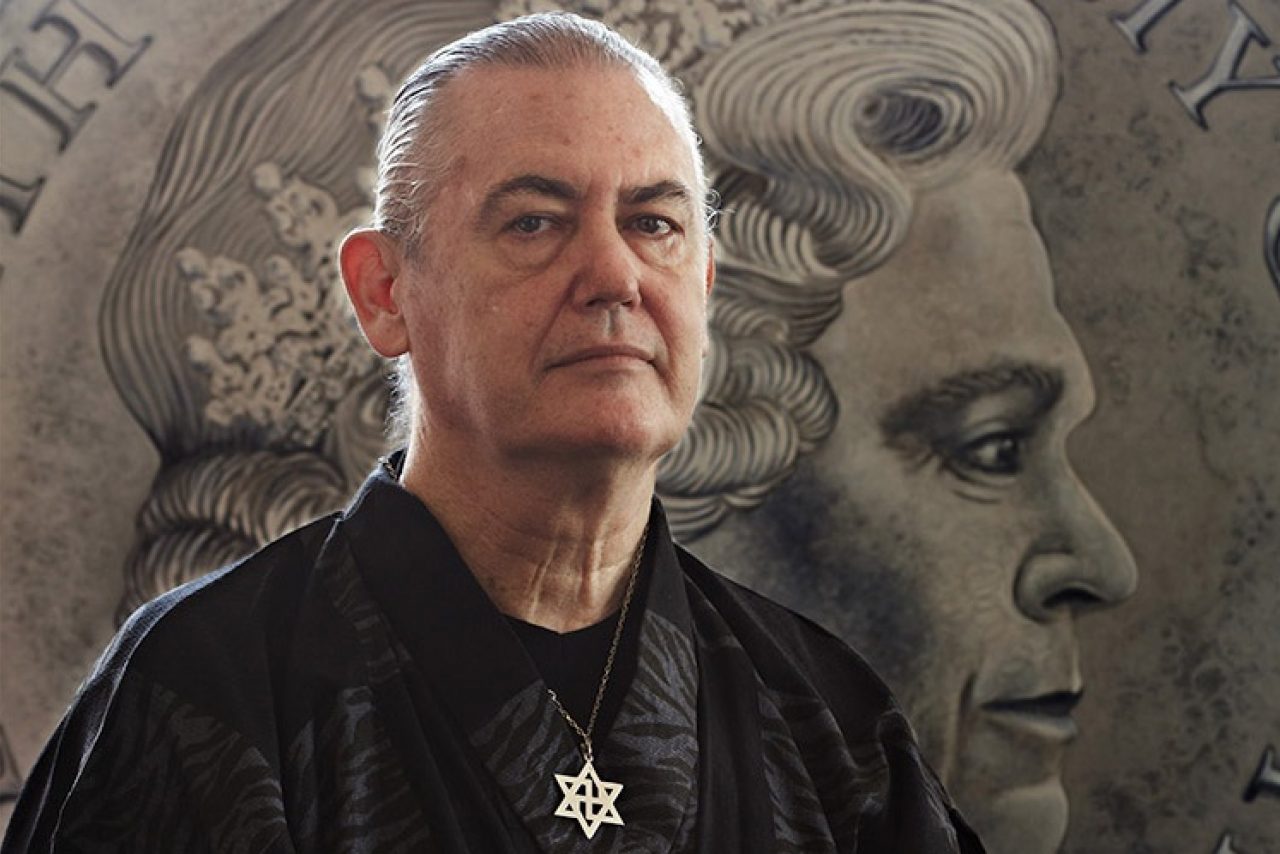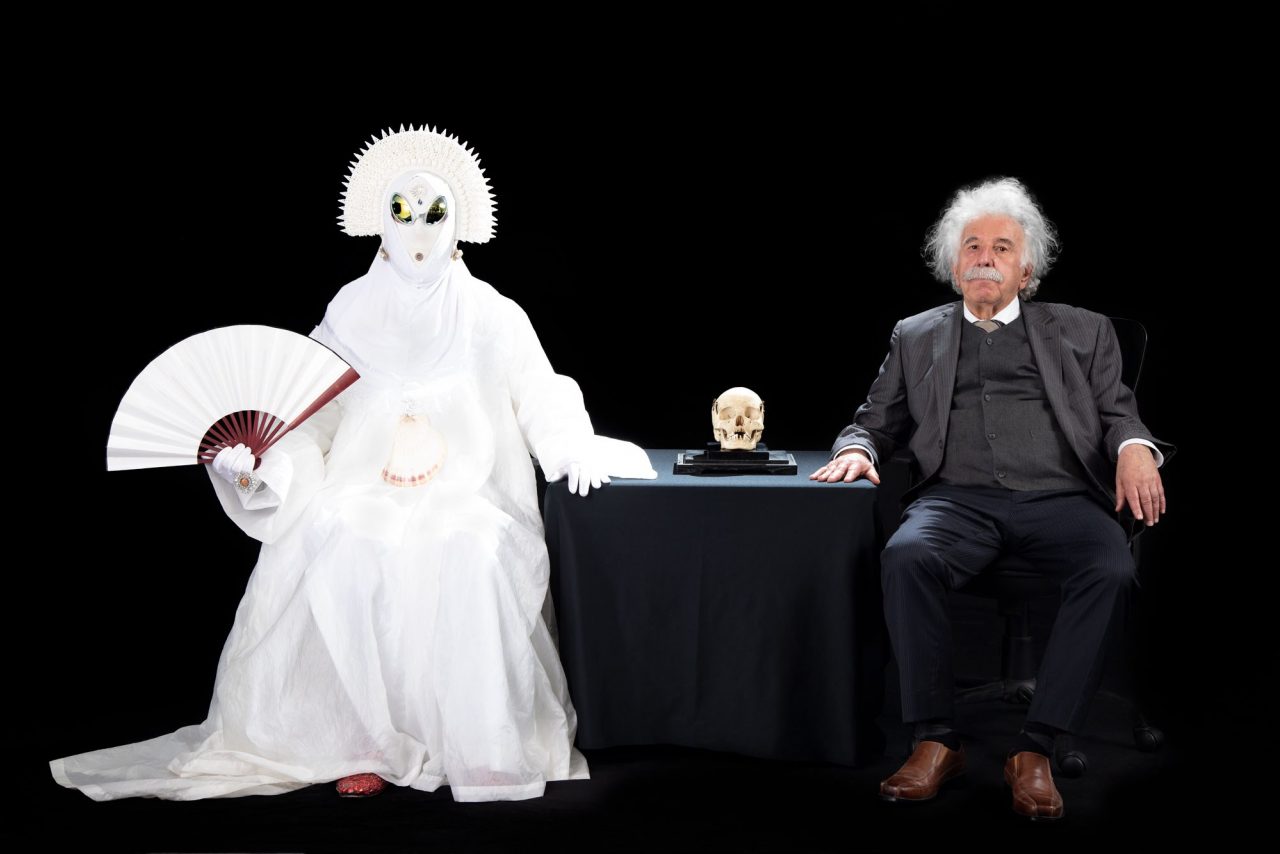Luke Roberts (b. 1952) collapses the personal and political, local and cosmological, religious and irreligious, and past and future to offer a unique spin on themes of religion, sexuality, and human history. Drawn to performance in the mid-1970s, he adopted a range of personae. The most important of these, Alice Jitterbug, was inspired by reading about the exploits of a cross-dressing Native American shaman and rodeo clown. In the late 1970s, Jitterbug was superseded by Pope Alice, who recalled both Pope Joan (the legendary medieval female pope) and Lewis Carroll’s Alice. Through this alternative-pontiff persona, Roberts was able to contest the Catholicism in which he was raised (particularly its hostility to homosexuality), while revelling in its pomp and paraphernalia. In the 1990s, he became a key figure in the queer-art movement, and Pope Alice a staple of Sydney’s annual Mardi Gras. Now known by the moniker Her Divine Holiness Pope Alice, Ambassadress from Infinity and Manifestation of Extraterrestrial Consciousness, Roberts’s Alice continues to express his research into hidden histories and the presence of mythologies in contemporary life. Her mission is to free humankind from the darkness of superstition by demonstrating how art can be the light from which violence and inhumanity flees.
Roberts works across many media, however photography has always been central to his practice. Much of his work is ‘photographic performance’. For Roberts, the photograph never offers a straight view of reality, but always an inverted, through-the-looking-glass one.
Roberts has shown prolifically across Australia including holding comprehensive solo exhibitions at the Institute of Modern Art, Brisbane; Australian Centre for Photography, Sydney and Queensland Art Gallery, Brisbane and has had his work featured in landmark group exhibitions including the Sydney Biennale (2002), the Asia-Pacific Triennial (1996) and Australian Perspecta (1991 & 1995). His work has also been shown internationally including at Museo Nacional Centro de Arte Reina Sofia, Madrid (2003) and PS1, New York (1997).
His work has been collected by major institutions nationally and internationally including Art Gallery of New South Wales, Sydney; National Gallery of Victoria, Melbourne; National Gallery of Australia, Canberra; Queensland Art Gallery, Brisbane; Gold Coast City Art Gallery; Griffith University; Harriet Jane Neville-Rolfe Gallery, Alpha; James Hardie Collection, State Library of Queensland; Kamloops Art Gallery, BC, Canada; Museum of Brisbane; Queensland University of Technology, Brisbane; Rockhampton Art Gallery; University Art Museum, University of Queensland, Brisbane; University of Southern Queensland; Newcastle Region Art Gallery; Museo Nacional Centro de Arte Reina Sofia, Madrid, Spain and McMaster Museum of Art, Hamilton, Ontario, Canada.

